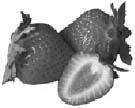Helping Your Overweight Child
Healthy eating and physical activity habits are key to your child's well-being. Eating too much and exercising too little can lead to overweight and related health problems that can follow children into their adult years. You can take an active role in helping your child—and your whole family—learn healthy eating and physical activity habits that can last for a lifetime.
Is my child overweight?

Because children grow at different rates at different times, it is not always easy to tell if a child is overweight. If you think that your child is overweight, talk to your health care provider. He or she can measure your child's height and weight and tell you if your child is in a healthy range.
How can I help my overweight child?
Involve the whole family in building healthy eating and physical activity habits. It benefits everyone and does not single out the child who is overweight.Do not put your child on a weight-loss diet unless your health care provider tells you to. If children do not eat enough, they may not grow and learn as well as they should.
Be supportive
| Tell your child that he or she is loved, is special, and is important. Children's feelings about themselves often are based on their parents' feelings about them. | |
| Accept your child at any weight. Children will be more likely to accept and feel good about themselves when their parents accept them. | |
| Listen to your child's concerns about his or her weight. Overweight children probably know better than anyone else that they have a weight problem. They need support, understanding, and encouragement from parents. |
Encourage healthy eating habits

| Buy and serve more fruits and vegetables (fresh, frozen, or canned). Let your child choose them at the store. | |
| Buy fewer soft drinks and high fat/high calorie snack foods like chips, cookies, and candy. These snacks are OK once in a while, but keep healthy snack foods on hand too and offer them to your child more often. | |
| Eat breakfast every day. Skipping breakfast can leave your child hungry, tired, and looking for less healthy foods later in the day. | |
| Plan healthy meals and eat together as a family. Eating together at meal times helps children learn to enjoy a variety of foods. | |
| Eat fast food less often. When you visit a fast food restaurant, try the healthful options offered. | |
| Offer your child water or low-fat milk more often than fruit juice. Fruit juice is a healthy choice but is high in calories. | |
| Do not get discouraged if your child will not eat a new food the first time it is served. Some kids will need to have a new food served to them 10 times or more before they will eat it. | |
| Try not to use food as a reward when encouraging kids to eat. Promising dessert to a child for eating vegetables, for example, sends the message that vegetables are less valuable than dessert. Kids learn to dislike foods they think are less valuable. | |
| Start with small servings and let your child ask for more if he or she is still hungry. It is up to you to provide your child with healthy meals and snacks, but your child should be allowed to choose how much food he or she will eat. |
Healthy snack foods for your child to try:

| Fresh fruit | |
| Fruit canned in juice or light syrup | |
| Small amounts of dried fruits such as raisins, apple rings, or apricots | |
| Fresh vegetables such as baby carrots, cucumber, zucchini, or tomatoes | |
| Reduced fat cheese or a small amount of peanut butter on whole-wheat crackers | |
| Low-fat yogurt with fruit | |
| Graham crackers, animal crackers, or low-fat vanilla wafers |
Foods that are small, round, sticky, or hard to chew, such as raisins, whole grapes, hard vegetables, hard chunks of cheese, nuts, seeds, and popcorn can cause choking in children under age 4. You can still prepare some of these foods for young children, for example, by cutting grapes into small pieces and cooking and cutting up vegetables. Always watch your toddler during meals and snacks.
Encourage daily physical activity

Like adults, kids need daily physical activity. Here are some ways to help your child move every day:
| Set a good example. If your children see that you are physically active and have fun, they are more likely to be active and stay active throughout their lives. | |
| Encourage your child to join a sports team or class, such as soccer, dance, basketball, or gymnastics at school or at your local community or recreation center. | |
| Be sensitive to your child's needs. If your child feels uncomfortable participating in activities like sports, help him or her find physical activities that are fun and not embarrassing. | |
| Be active together as a family. Assign active chores such as making the beds, washing the car, or vacuuming. Plan active outings such as a trip to the zoo or a walk through a local park. |
Because his or her body is not ready yet, do not encourage your pre-adolescent child to participate in adult-style physical activity such as long jogs, using an exercise bike or treadmill, or lifting heavy weights. Fun physical activities are best for kids.
Kids need a total of about 60 minutes of physical activity a day, but this does not have to be all at one time. Short 10- or even 5-minute bouts of activity throughout the day are just as good. If your children are not used to being active, encourage them to start with what they can do and build up to 60 minutes a day.
Fun physical activities for your child to try:
| Riding a bike | |
| Climbing on a jungle gym | |
| Swinging on a swing set | |
| Jumping rope | |
| Playing hopscotch | |
| Bouncing a ball |
Discourage inactive pastimes
| Set limits on the amount of time your family spends watching TV and videos, and playing video games. | |
| Help your child find FUN things to do besides watching TV, like acting out favorite books or stories, or doing a family art project. Your child may find that creative play is more interesting than television. | |
| Encourage your child to get up and move during commercials and discourage snacking when the TV is on. |
Be a positive role model
Children are good learners and they learn what they see. Choose healthy foods and active pastimes for yourself. Your children will see that they can follow healthy habits that last a lifetime.
Your health care provider
Ask your health care provider for brochures, booklets, or other information about healthy eating, physical activity, and weight control. He or she may be able to refer you to other health care professionals who work with overweight children, such as registered dietitians, psychologists, and exercise physiologists.
Weight-control program
You may want to think about a treatment program if:
| You have changed your family's eating and physical activity habits and your child has not reached a healthy weight. | |
| Your health care provider has told you that your child's health or emotional well-being is at risk because of his or her weight. |
The overall goal of a treatment program should be to help your whole family adopt healthy eating and physical activity habits that you can keep up for the rest of your lives. Here are some other things a weight-control program should do:
| Include a variety of health care professionals on staff: doctors, registered dietitians, psychiatrists or psychologists, and/or exercise physiologists. | |
| Evaluate your child's weight, growth, and health before enrolling in the program and watch these factors while enrolled. | |
| Adapt to the specific age and abilities of your child. Programs for 4-year-olds should be different from those for 12-year-olds. |
Help your family keep up healthy eating and physical activity behaviors after the program ends.
Other Resources
| The Food Guide Pyramid can help you make healthy food choices for your family. Available from the Center for Nutrition Policy and Promotion, 703-305-7600 and at www.usda.gov/cnpp/pyrabklt.pdf | |
| Tips for Using the Food Guide Pyramid for Young Children 2 to 6 Years Old can help you teach your young child what to eat to grow and stay healthy. Available from the U.S. Government Printing Office, 202-512-1800 and at www.usda.gov/cnpp/KidsPyra/PyrBook.pdf | |
| Healthy Eating and Physical Activity Across Your Lifespan: Helping Your Child provides in-depth information for parents. Available from the Weight-control Information Network (WIN), 1-877-946-4627 and at www.niddk.nih.gov/health/nutrit/pubs/parentips/tipsforparents.htm | |
| www.kidnetic.com provides healthy eating and physical activity tips for kids and parents. | |
| www.KidsHealth.org provides information about nutrition and fitness for kids. | |
| www.bam.gov answers kids' health questions about body and mind. | |
| www.verbnow.com encourages kids to get physically active. |